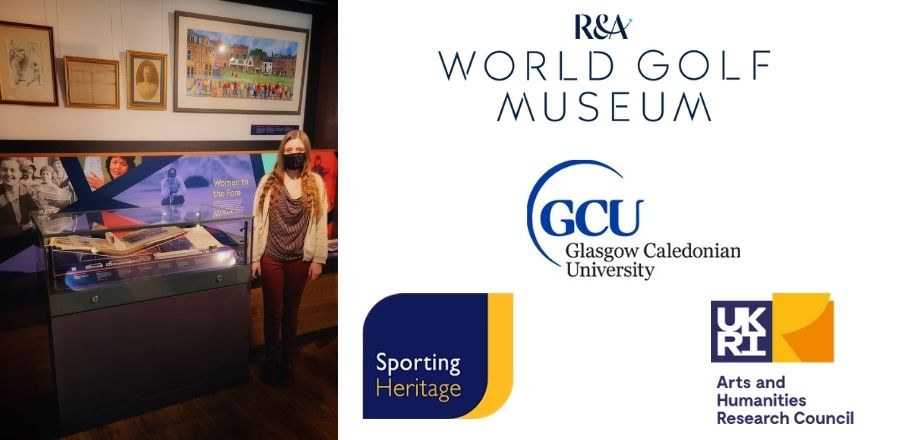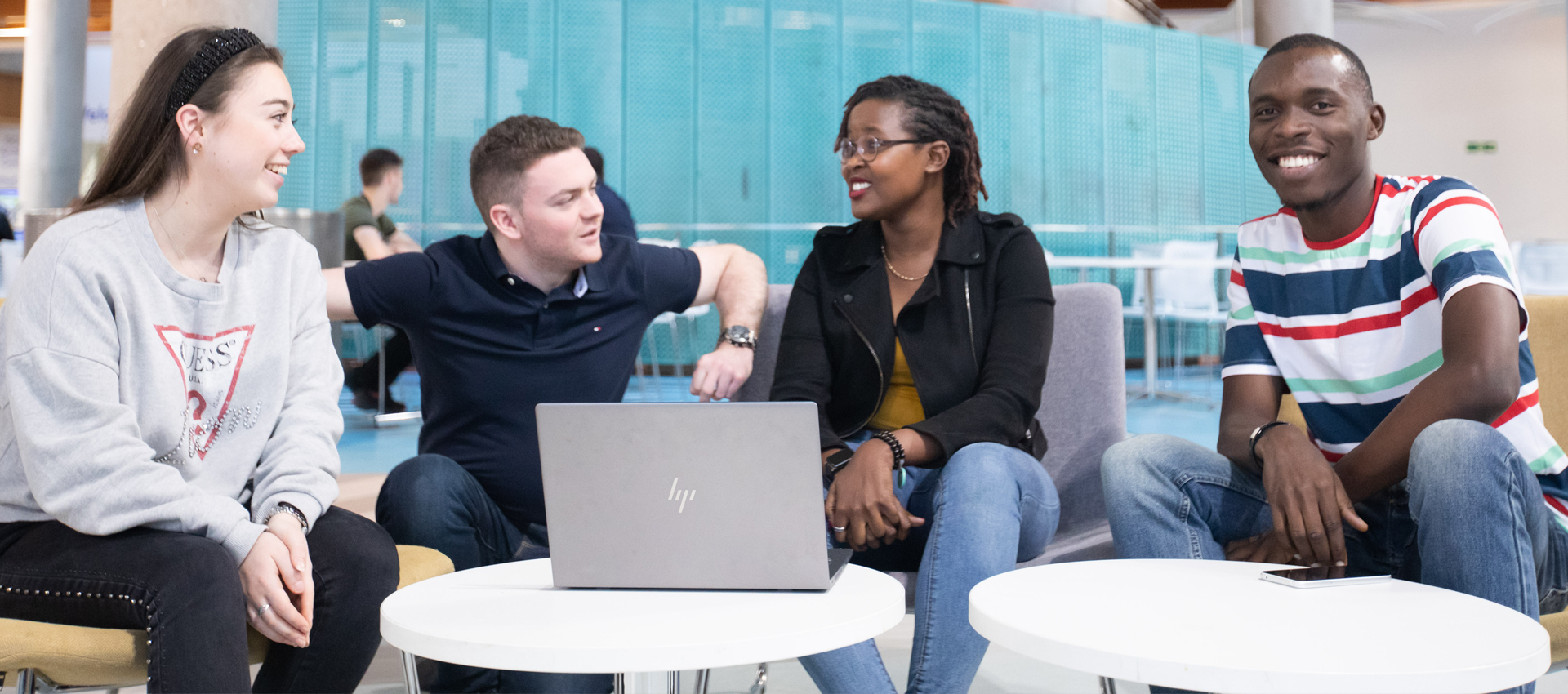PHD opportunity tees up perfect learning experience

A PHD student has been reflecting on her academic journey and how her interest in one of the country’s most loved sports has grown – despite never playing it before.
Lauren Beatty started her Collaborative Doctorate Partnership (CDP) PhD in January 2020, and is providing first of its kind research into women’s hidden experiences of playing golf at club level in Scotland between 1945 and 1995.
Having previously completed an Undergraduate degree in History with French at the University of Dundee and a Masters in Museum and Gallery Studies at the University of St Andrews, Lauren jumped at the chance to combine her passions through GCU.
CDPs are funded by the Arts and Humanities Research Council and links participants with a museum or heritage organisation. Lauren is affiliated to the Sporting Heritage consortium. The R&A World Golf Museum has proven to be the perfect place for Lauren to develop her knowledge through Learning and Access Curator, Hannah Fleming and the wealth of resources on offer. Back at GCU, Lauren has been supported by academic supervisors, Dr Fiona Skillen and Professor Oonagh Walsh in the Department of Social Sciences.
We caught up with Lauren to find out more:
So, how did you initially find out about the opportunity?
“I was actually doing a traineeship at the University of St Andrews Museum when I saw the PHD advertised - I just thought, ‘I’m going to go for that’.
The research subject for CDPs are already proposed, so it wasn’t me that put the idea forward. I was instantly attracted to it though, because I really enjoyed learning about social Scottish history and women’s history.
To be honest, it was a surprise to be accepted given I don’t come from a golf background but I’ve loved every minute of it!”
Your study focuses on 1945-1995 – why is this such an important time period?
“There’s quite a lot of research that’s already been done on the early development of the game, so there’s a gap in the post-World War II period that we’re looking at.
The ladies’ game is very well-documented and it became more formalised in April 1893 with the formation of the Ladies’ Golf Union (LGU). They were fantastic organisers and had the first Women’s Amateur Championship established in two months. By 1896 they established the first universal handicapping system – 30 years prior to men establishing their system. They documented the game from that period, so we have access to this fantastic history as a result.”
What does your work specifically focus on?
“My research is looking at grassroots, club-level in Scotland and focusing on the personal experiences of those women across Scotland who actually played between 1945 and 1995. I’m really interested in what motivated women of different ages and different playing abilities to get involved: if they played it as a child, if there was the opportunity at school, if they played it on holiday and if there were any challenges. My research looks at the impact, gender, class and stage of life cycle had on women’s experiences.”
Give us an insight into your time spent with The R&A World Golf Museum…
“I was with them at the start of my PHD and the museum temporarily closed for renovation during the pandemic. There’s some great displays and amazing representation of women in the galleries. I was fortunate enough to be able to contribute towards the writing of interpretation for some of the sections in the galleries.
As part of the studentship I currently have the opportunity of a placement which allows me to work for a short period in the museum on a daily basis. The main project I’m contributing towards is digitising the LGU photograph albums that the museum holds, which will obviously benefit the museum but also help with my own research. I’ll also get to work closely with the curatorial team to help with new objects that come into the museum collection. On top of this, I’ll hopefully be able to assist Hannah Fleming with the education and outreach programmes that she does in the museum. It’s amazing to be back and I’m looking forward to spending time with them until June.”
It must have been a challenging time to complete a PHD during the pandemic?
“The biggest challenge for me was the transition from being in the museum every day at the start, to working at home in isolation. I live away from the university, so I was having to rely on online materials. There have been challenges but I have been quite fortunate that I’ve been able to access the archive at the museum at different points, when restrictions allowed. I had planned to do my oral history interviews in-person but I adapted and completed 21 out of 25 remotely - just recently I’ve managed to do a couple in-person.”
When you were studying your Undergraduate in History with French, I bet you didn’t expect to be involved in something like this?
“In all honesty, I never saw myself doing a PHD. It wasn’t something I envisaged as an Undergraduate student and it’s really just been a gradual continuation for me. As I’ve gone on, I’ve just loved studying more and more – it’s definitely the independent research element that appeals to me. My favourite part of my Masters was actually my dissertation!
I knew early on that I wanted to work in a museum and I volunteered at the University of Dundee Museum Services while I was doing History - that was when my love of museums started. I then obviously went on and did my MLitt in Museum and Gallery Studies, which really combined my two passions of history and museums into one. I then really wanted to take on this PHD as it combined the opportunity to explore both aspects of my interests and I’ve definitely not got any regrets.”
After your experience over the last couple of years, are you now officially a golf fan?
“It’s funny because I’ve never played as it’s not been in my family, however you can’t be in the museum and speak to all these amazing women who play without thinking, ‘wow, that might be worth giving a go’. Two things I want to do is go to a driving range and visit the Himalayas, which is the putting course of the original St Andrew’s Ladies’ Golf Club established in 1867.”
How grateful are you for the support you’ve received on your PHD journey?
“I’m really fortunate that I’ve got three fantastic supervisors to lean on throughout this. Fiona and Oonagh have so much experience in their fields and Hannah has worked at the museum for almost 17 years - she knows so much about women’s golf. I’ve just been very lucky throughout my whole time.”
You can find out more about Lauren’s research on her blog, which was set up to document her PHD journey.
By Ross Clark
Got an SHLS or GSBS story? Email me at Ross.Clark@gcu.ac.uk or message me on Twitter
